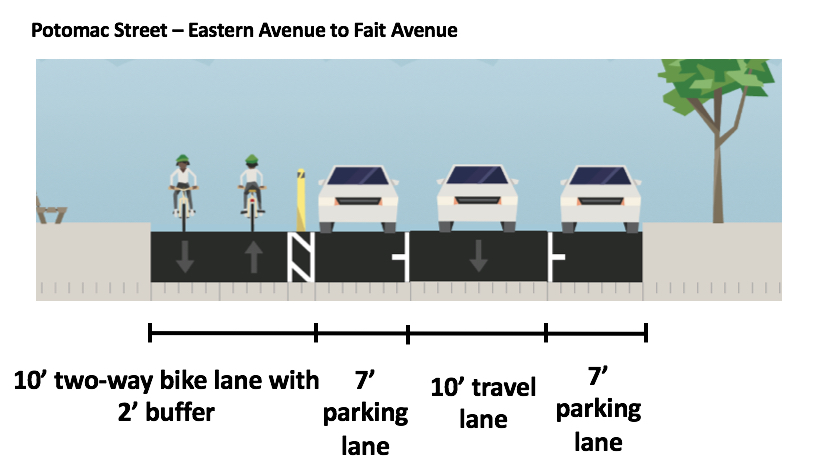Action Alert: Show Up For Bikes!
This week there are THREE community meetings that will further discussions around access for people riding bikes. See below for description and details, and plan to show up, speak out, and let elected leaders, city agencies, and your neighbors know: I Bike, I Vote.
Think a bike friendly Baltimore is a done deal? Don’t get complacent. We have a ways to go before all local leaders believe there is a demand for safe streets that prioritize people over cars. We win by showing up and being vocal. Join us!
7:00pm Tonight, May 23rd
Canton Community Association General Meeting
United Evangelical Church, 3200 Dillon Street (at the corner of S. East and Dillon, entrance is on S. East)
Potomac Street protected bike lanes are a main agenda item for this monthly general meeting. Councilman Zeke Cohen will discuss transportation in the 1st District and BCDOT will provide an overview of the Potomac Street project including reviewing the multi-year planning process and phased construction approach taking place.
Do you live in Canton, or nearby communities? Come prepared with one minute talking points about why you support streets designed for all modes, and how you or your family’s quality of life and safety are improved with the construction of safe, comfortable facilities for people who bike. Speak up, even if others say what you were going to say.
6:00pm Tomorrow, May 24th
33rd Street Area Public Meeting About Proposed Walking/Biking Trail
Chaired by Councilwoman Mary Pat Clarke, 14th District
Abbottston Elementary School, 1300 Gorsuch Ave (Enter school through the Gorsuch Ave. parking lot)
In 2015, Bikemore and Rails-to-Trails formed the Baltimore Greenway Trails Coalition. Our work, funded through the Center for Disease Control program Plan4Health, seeks to build support for a city-wide trail concept that would connect over 50 neighborhoods to our city parks by building a safe multi-use trail to walk and bike. Last fall, we began outreach along the 33rd Street corridor to engage residents in developing a concept for a trail.
This Wednesday, Councilwoman Clarke is bringing together City agencies and the Baltimore Greenway Trails Coalition to discuss the project with residents. This meeting was spurred mostly by residents vocal in their opposition to all further engineering and study about how a multi-use trail can improve public health outcomes, active transportation access, and spur economic development.
Come express your support for The Baltimore Greenway Trails Coalition’s efforts to connect 50 neighborhoods to our city parks through a 35-mile trail loop, and let Councilwoman Clarke know you support further study and engineering to obtain the safest option for creating safe places to walk and bike along 33rd Street.
7:00pm Tomorrow, May 24th
Roland Park Civic League Annual Meeting
Roland Park Elementary and Middle School, 5207 Roland Avenue
The Roland Park Civic League Cycle Track Committee has reached consensus and recommended the RPCL Board adopt this statement to present to the City and guide next steps:
Consensus Statement: Either restore curbside parking with a wider, safer bike lane and slower traffic, or partner with the community to create a complete street that works for everyone. The full end of year report from the Cycle Committee can be found here.
Bikemore’s recommendation from the earliest planning stages has been to create a road diet on Roland Avenue that reduces speed and improves safety of all users. That option is outlined in the Alta Planning report commissioned by Roland Park Civic League, and we believe it satisfies the need for a complete street that works for everyone.
If you ride a bike along Roland Avenue and want to be part of the community led conversation about what happens next for active transportation along Roland Avenue, show up and get involved.
Can’t attend meetings this week, but want to be part of our movement to ensure that Complete Streets are standard operating procedure in all neighborhoods?
Sign our Complete Streets pledge and stay up to date on our efforts to draft legislation that will prioritize people over cars, and put the investments that make streets safer for walking and biking and taking transit in the neighborhoods that need them most.







